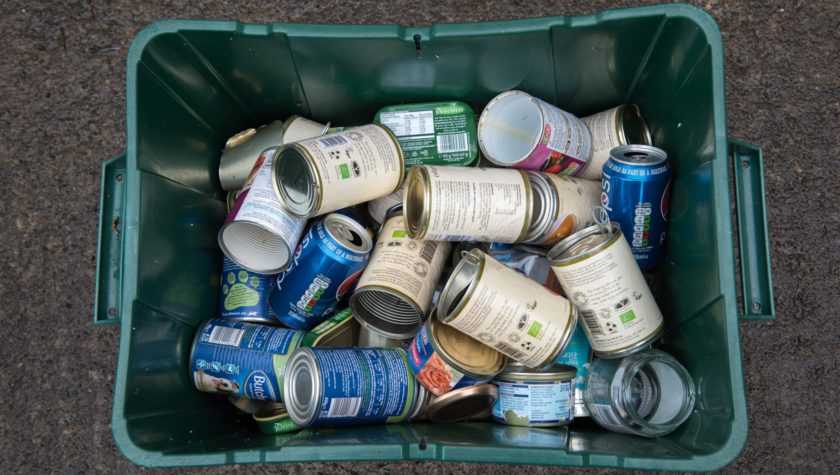The Government’s recent Resources and Waste Strategy is a welcome addition to the sector. It is comprehensive in its scope, covering everything from coffee cups to waste crime, and ambitious in both the range and detail of its proposals.
We particularly welcome the strategy since it takes on board all of the recommendations on tackling waste from the National Infrastructure Assessment, published in July.
But the ultimate test of any strategy is the degree to which it changes behaviour, and the number of its measures that are implemented. With strong public support for action in this area, we will monitor progress closely.
The Resources and Waste Strategy sets out seven forthcoming consultations. These are clearly important, particularly where they may restrict the use of certain products, such as straws, which have a clear medical use case. But it is equally important that consultations lead to action.
There is a strong case for change in the waste sector. Sir David Attenborough’s Blue Planet has generated a wave of public support. Our social research showed that English households see recycling as important, with 79 per cent of those asked prepared to separate their food waste, 68 per cent already sorting plastics packaging for recycling and half of those questioned saying they would pay up to £30 a year more for their groceries in exchange for more recyclable packaging.
With that in mind, the National Infrastructure Assessment recommendations are designed to meet key targets for recycling 65 per cent of all municipal waste and 75 per cent of all plastics packaging by 2030 – a key test of the Government’s new strategy will also be the impact it makes on these overall measures.
In that context, and as our National Infrastructure Assessment highlighted, there is a strong case for targeting plastic packaging. Increasing the recycling rate reduces emissions where plastic waste would otherwise have been burnt, and prevents leachates from contaminating local water systems.
The Strategy and the Autumn Budget include plans to expand the use of fiscal incentives and the ‘polluter pays’ principle in the sector. This is sensible, especially given how tax instruments have been very successful in the waste sector: the landfill tax played a central role in in reducing the amount of local authority waste sent to landfill from 80 per cent in 2001 to just over 10 per cent by 2018; similarly, the plastic bag tax appears to have dramatically reduced use since introduction.
When looking at future fiscal incentives, the Government should try to make them as smart as administratively possible. This means focusing on the environmental costs: an incineration tax, as mentioned in both the Strategy and the Budget, should concentrate on the material that generates harmful emissions – plastics; similarly, a landfill tax should concentrate on the biodegrable waste that generates methane.
In the forthcoming consultation, the Government will consider targets for specific materials. We think there is a case for being particularly ambitious on plastic packaging. The voluntary plastics pact, to which a number of prominent businesses such as Asda and M&S have signed up to, sets a target of 70 per cent recycled or compostable plastic packaging by 2025. Our recommendation for a 75 per cent recycling target for plastic packaging is below long-term trends for the UK as a whole – but would be ambitious in applying to England alone.
The strategy proposes consistent collection services for households and businesses, and separate collection for food waste. Both are positive, and were recommended in our Assessment.
Our social research showed that people in England wanted to recycle more but felt frustrated by the system. In particular, they wanted reassurance that recycling was not going to landfill. Identifying a core set of dry recyclable materials and sending the same signal both at home and in work are important ways to unpick the confusion and to diffuse some of the bad faith in the system.
With legislation proposed for 2023, the Government should identify the core materials promptly so that, as local authority collection services roll over, they can move to the new system. To accelerate this process, the Commission recommended £100m of transitional capital from 2020 to 2023 to cover the costs for new containers.
But one issue will be that knowledge of commercial waste has been poor to date: Defra recently revised its estimate by nearly 40%. Understanding the quantity and flow of this waste is important for identifying and building the appropriate infrastructure.
The move away from weight-based towards impact-based targets is positive. This will prevent councils from chasing the heaviest but not the most environmentally significant waste streams, such as glass. It may also dramatically redraw recycling performance across the country, where suburban and rural authorities have led. This is something central and local government will need to prepare themselves – and the public – for.
This strategy is a big step forward. It is the most significant document to have been published in the sector since the 2011 Waste Review. The scope and detail are ambitious. The strong public support means Ministers have a real opportunity to make a considerable difference to the way we manage our waste and – in turn – the impact it has on our environment. With the direction now set, the key challenge will be delivery.
Tom Bousfield is an Economic Adviser at the National Infrastructure Commission




